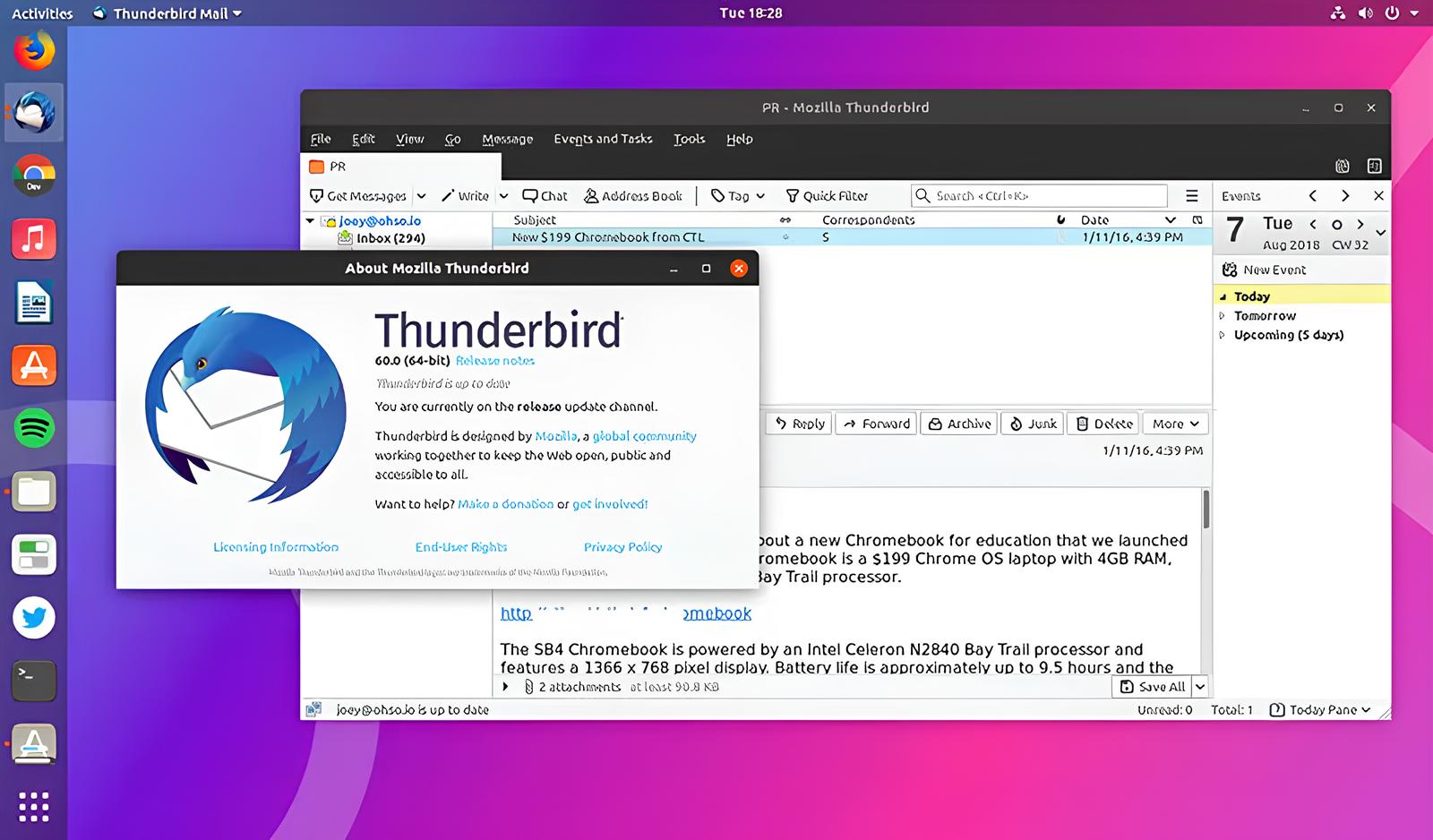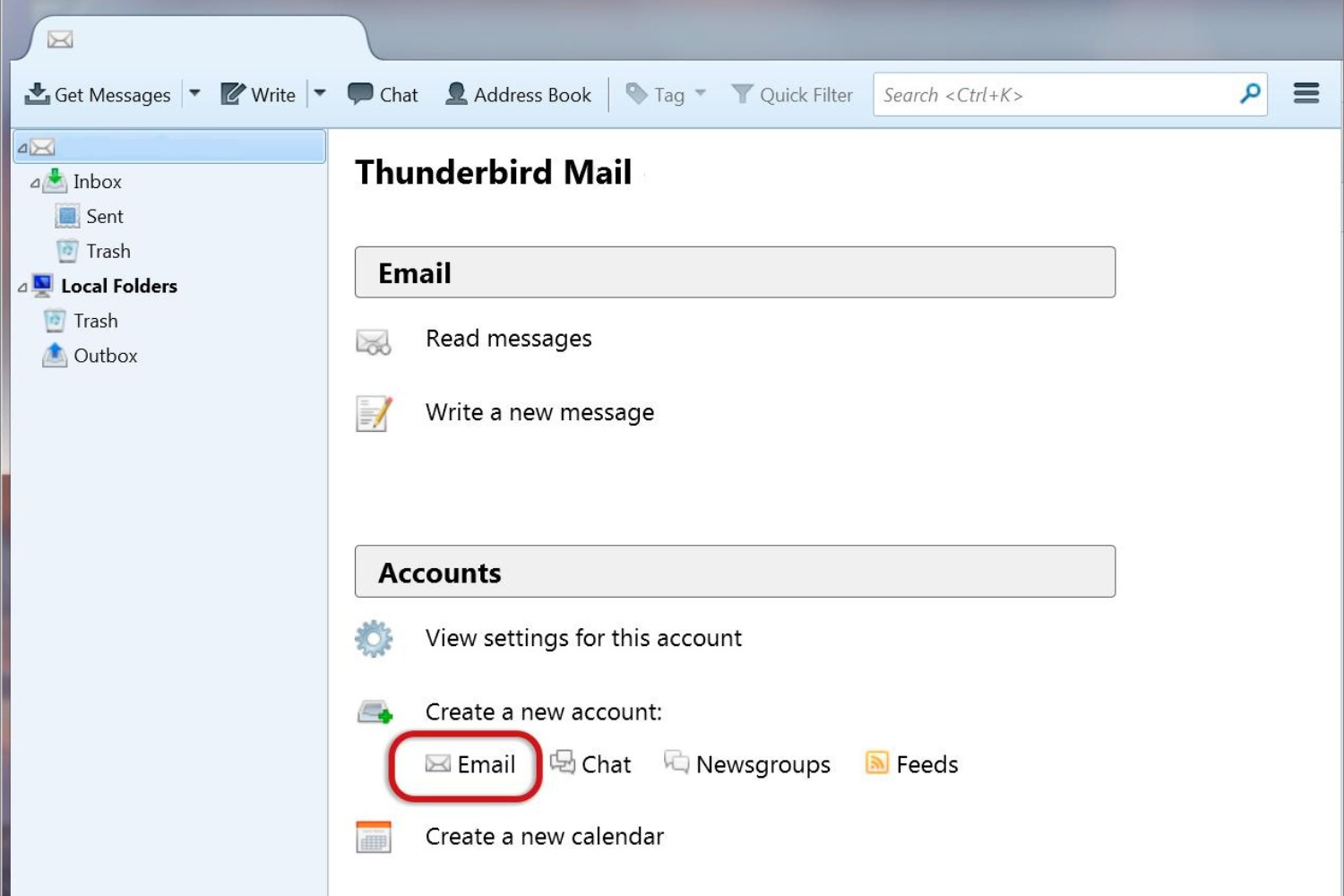Introduction
Mozilla Thunderbird is a versatile and feature-rich email client that provides a seamless communication experience for millions of users worldwide. Just like any software, Thunderbird receives periodic updates to enhance its performance, security, and functionality. Staying up to date with these updates is crucial to ensure that you are benefiting from the latest improvements and security patches.
In this article, we will explore the various methods for updating Mozilla Thunderbird, whether you are using it on a Windows, Mac, or Linux system. By keeping your Thunderbird client updated, you can enjoy a smoother and more secure email experience, with access to the latest features and bug fixes.
Whether you are a casual user or rely on Thunderbird for professional communication, understanding how to update the software is essential. This guide will walk you through the process, ensuring that you can effortlessly keep your Thunderbird client current and optimized for your needs.
Let's dive into the different methods for updating Mozilla Thunderbird, so you can make the most of this powerful email client.
Checking for Updates
Checking for updates in Mozilla Thunderbird is a straightforward process that ensures you are always running the latest version of the software. By staying updated, you can benefit from new features, performance enhancements, and most importantly, security patches that protect your email data from potential vulnerabilities.
To check for updates in Mozilla Thunderbird, start by opening the application on your computer. Once Thunderbird is launched, navigate to the menu bar and click on the "Help" option. From the dropdown menu, select "About Thunderbird." This action will open a window displaying the current version of Thunderbird installed on your system, along with information about the latest available update.
Upon clicking "About Thunderbird," the software will automatically check for updates. If a new version is available, Thunderbird will prompt you to download and install the update. It's important to note that Thunderbird may not always automatically check for updates in the background, so it's a good practice to manually check for updates periodically to ensure you are not missing out on important improvements.
In addition to the manual method, Thunderbird also provides an option to enable automatic updates. This feature allows the software to check for updates in the background and notify you when a new version is available. To enable automatic updates, go to the menu bar, click on "Tools," then select "Options." Within the Options window, navigate to the "Advanced" tab and select the "Update" sub-tab. Here, you can choose to enable automatic updates and set the frequency at which Thunderbird checks for new versions.
By regularly checking for updates in Mozilla Thunderbird, you can ensure that your email client remains secure, stable, and equipped with the latest features. This proactive approach to software maintenance not only enhances your user experience but also safeguards your email communications from potential security threats.
In the next section, we will delve into the process of manually updating Mozilla Thunderbird, providing you with the knowledge to take control of the update process and keep your email client optimized for peak performance.
Manual Update
Manually updating Mozilla Thunderbird allows you to take control of the update process, ensuring that you can promptly install the latest version of the software. While Thunderbird offers automatic update options, some users prefer to manually initiate the update process to have a more hands-on approach to managing their software updates.
To manually update Mozilla Thunderbird, start by opening the application on your computer. Once Thunderbird is launched, navigate to the menu bar and click on the "Help" option. From the dropdown menu, select "About Thunderbird." This action will open a window displaying the current version of Thunderbird installed on your system, along with information about the latest available update.
If a new version of Thunderbird is available, you will be prompted to download and install the update. Click on the "Check for Updates" button to initiate the manual update process. Thunderbird will then connect to the update server to search for the latest version. If an update is found, you will be provided with the option to download and install it.
Upon selecting the "Download" button, Thunderbird will begin fetching the update package from the server. Once the download is complete, the software will prompt you to install the update. Follow the on-screen instructions to proceed with the installation process. Depending on your system configuration, you may be required to close and reopen Thunderbird to complete the update.
It's important to note that manually updating Mozilla Thunderbird allows you to have full visibility and control over the update process. This can be particularly useful if you prefer to review the details of each update before installing it on your system. Additionally, manual updates can be beneficial if you are experiencing issues with the automatic update feature or if you want to ensure that the update process aligns with your preferred schedule.
By understanding how to manually update Mozilla Thunderbird, you can confidently manage the software's update process, ensuring that you are always running the latest version. This proactive approach to software maintenance empowers you to stay ahead of potential security vulnerabilities and benefit from the latest features and improvements offered by Thunderbird.
In the subsequent section, we will explore the convenience of automatic updates in Mozilla Thunderbird, providing insights into how you can leverage this feature to streamline the update process and maintain a secure and efficient email client.
Automatic Updates
Automatic updates in Mozilla Thunderbird offer a convenient and proactive approach to keeping the email client current with the latest features and security enhancements. By enabling automatic updates, users can ensure that their Thunderbird software is regularly checked for new versions, reducing the risk of running outdated and potentially vulnerable software.
To enable automatic updates in Mozilla Thunderbird, start by opening the application on your computer. Once Thunderbird is launched, navigate to the menu bar, click on "Tools," and then select "Options." Within the Options window, navigate to the "Advanced" tab and select the "Update" sub-tab. Here, you can choose to enable automatic updates and set the frequency at which Thunderbird checks for new versions.
Once automatic updates are enabled, Thunderbird will periodically check for new versions in the background, ensuring that you are promptly notified when an update is available. This seamless process eliminates the need for manual intervention, allowing you to focus on your email communication without worrying about the software's version status.
By leveraging automatic updates, users can benefit from the following advantages:
-
Enhanced Security: Automatic updates ensure that Thunderbird receives critical security patches as soon as they are released. This proactive approach helps safeguard your email data from potential vulnerabilities and security threats, providing peace of mind as you communicate and exchange information through the email client.
-
Effortless Maintenance: With automatic updates enabled, Thunderbird takes care of the update process in the background, minimizing the need for manual intervention. This streamlines the software maintenance experience, allowing users to stay current with minimal effort.
-
Access to New Features: By staying updated with automatic updates, users can promptly access new features and improvements introduced in the latest versions of Thunderbird. This ensures that you can leverage the full potential of the email client, benefiting from enhanced functionality and user experience.
-
Optimized Performance: Regular updates through the automatic update feature contribute to the overall performance and stability of Mozilla Thunderbird. By staying current, users can experience a smoother and more efficient email client, free from the performance issues that outdated software may present.
Enabling automatic updates in Mozilla Thunderbird is a proactive step towards maintaining a secure, efficient, and feature-rich email client. By leveraging this feature, users can ensure that their Thunderbird software remains up to date, providing a reliable platform for their email communication needs.
Troubleshooting Updates
Occasionally, users may encounter issues when attempting to update Mozilla Thunderbird. These issues can range from update failures to unexpected errors during the update process. Understanding how to troubleshoot update-related problems can help users overcome these obstacles and ensure that their Thunderbird software remains current and functional.
One common troubleshooting step for update issues in Thunderbird is to check the internet connection. Since Thunderbird relies on an active internet connection to download updates, a stable and reliable connection is essential. Users should verify that their internet connection is functioning properly and that there are no network issues preventing Thunderbird from accessing the update servers.
Another potential cause of update problems in Thunderbird is conflicting third-party software or security settings. Antivirus programs, firewalls, or other security software may interfere with the update process, leading to errors or failed updates. Users can troubleshoot this issue by temporarily disabling such software and attempting the update again. If the update is successful after disabling third-party software, users may need to adjust the settings of their security programs to allow Thunderbird to update without interference.
In some cases, corrupted installation files or settings within Thunderbird can hinder the update process. Users can attempt to resolve this by performing a clean reinstall of Thunderbird. This involves uninstalling the existing Thunderbird software, removing any residual files or settings, and then reinstalling the application from a fresh download. A clean reinstall can help eliminate any underlying issues that may be preventing successful updates.
Additionally, users can check for known issues or updates related to their specific operating system. Sometimes, certain operating system configurations or compatibility issues can impact Thunderbird's ability to update. By staying informed about any relevant updates or patches for their operating system, users can address potential compatibility issues that may be affecting Thunderbird's update process.
By understanding and implementing these troubleshooting steps, users can effectively address update-related issues in Mozilla Thunderbird, ensuring that the software remains up to date and fully functional. Proactively troubleshooting update problems can help users maintain a secure and reliable email client, providing a seamless communication experience without the disruptions caused by outdated software or update failures.

























